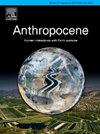不同SSP-RCP情景下青藏高原水土保持功能分区与空间格局优化
IF 3.3
2区 地球科学
Q2 ENVIRONMENTAL SCIENCES
引用次数: 0
摘要
青藏高原被誉为“亚洲水塔”,其水资源涵养对中国乃至南亚、东南亚、中亚地区具有重要影响。目前,由于气候和人为影响,水资源保护是不稳定的。加强三峡库区水资源涵养,对应对气候变化、维护下游供水稳定具有重要意义。基于2000年、2005年、2010年、2015年和2020年的栅格数据,采用贝叶斯网络对青藏高原的水资源涵养进行了评价,确定了影响水资源涵养的关键变量和状态。最后,通过网格编码分析,确定了SSP-RCP情景下2021-2100年的优化区域。结果表明:(1)青藏高原水分涵养量自东南向西北呈递减趋势;雅鲁藏布江流域(YTRB)和三江源区(TRSR)的平均值分别比QTP高36.47 %和24.93 %。(2)降水、土地利用和潜在蒸散对保水的贡献大于1%,是关键变量。(3) QTP在未来情景下可划分为4个生态分区。其中,生态涵养区面积占比平均增加7.65 %,生态控制区面积占比平均减少8.38 %。有针对性的管理策略可以在这些不同的区域实施。本文的研究方法可推广到其他地区加强节水,对优化青藏高原生态工程布局和生态系统管理具有实践指导价值。本文章由计算机程序翻译,如有差异,请以英文原文为准。
Optimization of functional zoning and spatial patterns of water conservation on the Qinghai-Tibetan Plateau under different SSP-RCP scenarios
The Qinghai-Tibetan Plateau (QTP) is known as the water tower of Asia, and its water conservation has an important impact on China and even on South, Southeast, and Central Asia. Currently, the water conservation is unstable due to climate and anthropogenic impacts. Strengthening the water conservation of the QTP is crucial for coping with climate change and maintaining the stability of the downstream water supply. Based on the raster data of 2000, 2005, 2010, 2015, and 2020, this study employed the Bayesian network to assess the water conservation on the QTP, and to determine key variables and states that affect water conservation. Finally, we identified the optimized zones under the SSP-RCP scenarios for the years 2021–2100 through grid coding analysis. The results show that: (1) The water conservation of the QTP shows a decreasing trend from the southeast to the northwest. The average value of Yarlung Tsangpo River Basin (YTRB) and Three-Rivers Source Region (TRSR) were 36.47 % and 24.93 % higher than that of the QTP. (2) Precipitation, land use, and potential evapotranspiration contribute more than 1 percent to water conservation and are key variables. (3) The QTP can be divided into four ecological subzones in future scenarios. Among them, the area proportion of ecological conservation zone increases by an average of 7.65 %, and the area proportion of ecological control zone decreases by an average of 8.38 %. Targeted management strategies can be implemented in these distinct zones. The research methodology of this paper can be extended to other regions to enhance water conservation, which has practical guiding value for optimizing the ecological engineering layout and ecosystem management on the QTP.
求助全文
通过发布文献求助,成功后即可免费获取论文全文。
去求助
来源期刊

Anthropocene
Earth and Planetary Sciences-Earth and Planetary Sciences (miscellaneous)
CiteScore
6.30
自引率
0.00%
发文量
27
审稿时长
102 days
期刊介绍:
Anthropocene is an interdisciplinary journal that publishes peer-reviewed works addressing the nature, scale, and extent of interactions that people have with Earth processes and systems. The scope of the journal includes the significance of human activities in altering Earth’s landscapes, oceans, the atmosphere, cryosphere, and ecosystems over a range of time and space scales - from global phenomena over geologic eras to single isolated events - including the linkages, couplings, and feedbacks among physical, chemical, and biological components of Earth systems. The journal also addresses how such alterations can have profound effects on, and implications for, human society. As the scale and pace of human interactions with Earth systems have intensified in recent decades, understanding human-induced alterations in the past and present is critical to our ability to anticipate, mitigate, and adapt to changes in the future. The journal aims to provide a venue to focus research findings, discussions, and debates toward advancing predictive understanding of human interactions with Earth systems - one of the grand challenges of our time.
 求助内容:
求助内容: 应助结果提醒方式:
应助结果提醒方式:


